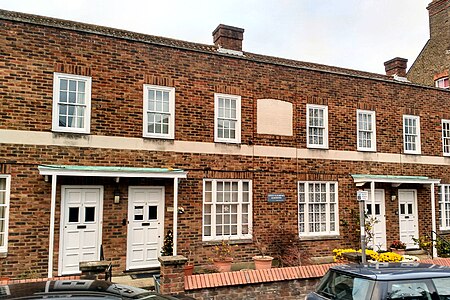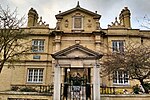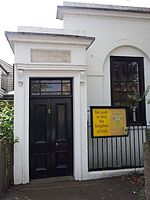Queen Elizabeth's Almshouses, Richmond

Queen Elizabeth's Almhouses are almshouses in Richmond, London, founded by Sir George Wright in 1600 (during the reign of Elizabeth I) to house eight poor aged women. Known originally as the "lower almshouses", they were built in Petersham Road, a few hundred yards south of what is now Bridge Street. By 1767, they were almost derelict. In 1767, William Turner rebuilt the almshouses on land at the top end of his estate in The Vineyard. Funds for the rebuilding were raised by public subscription. The almshouses were rebuilt again in 1857. They were damaged during World War II and replaced with four newly built houses in 1955.
Excerpt from the Wikipedia article Queen Elizabeth's Almshouses, Richmond (License: CC BY-SA 3.0, Authors, Images).Queen Elizabeth's Almshouses, Richmond
The Vineyard, London St Margarets (London Borough of Richmond upon Thames)
Geographical coordinates (GPS) Address Nearby Places Show on map
Geographical coordinates (GPS)
| Latitude | Longitude |
|---|---|
| N 51.458333333333 ° | E -0.30194444444444 ° |
Address
The Vineyard 10a
TW10 6AQ London, St Margarets (London Borough of Richmond upon Thames)
England, United Kingdom
Open on Google Maps









